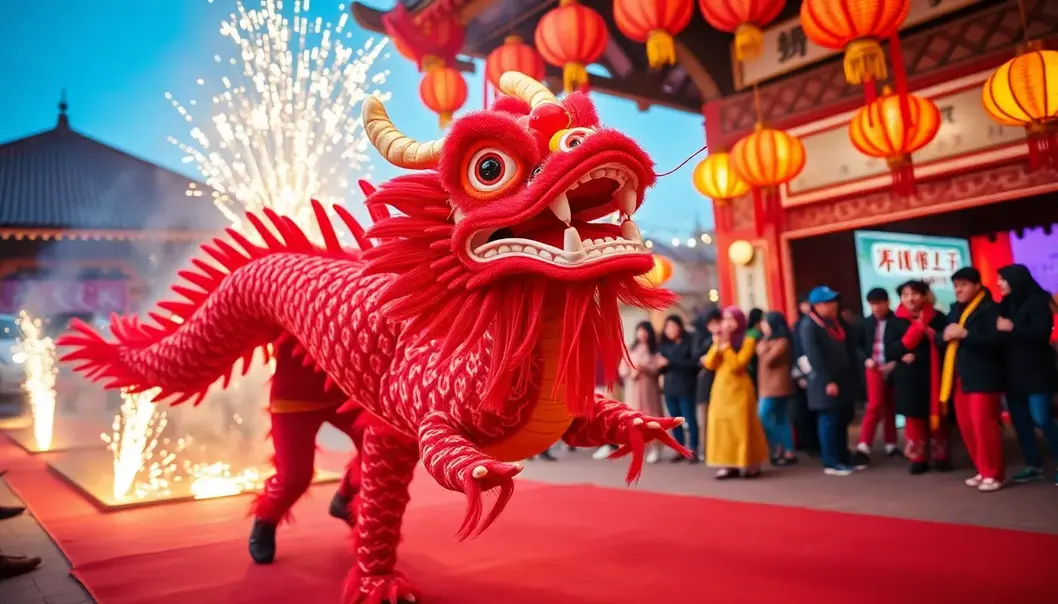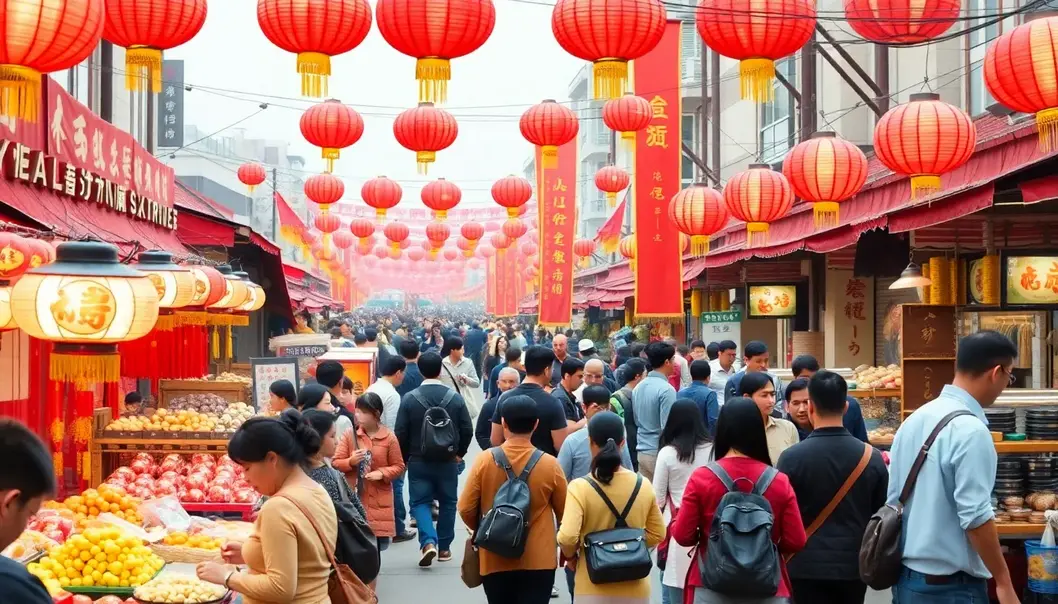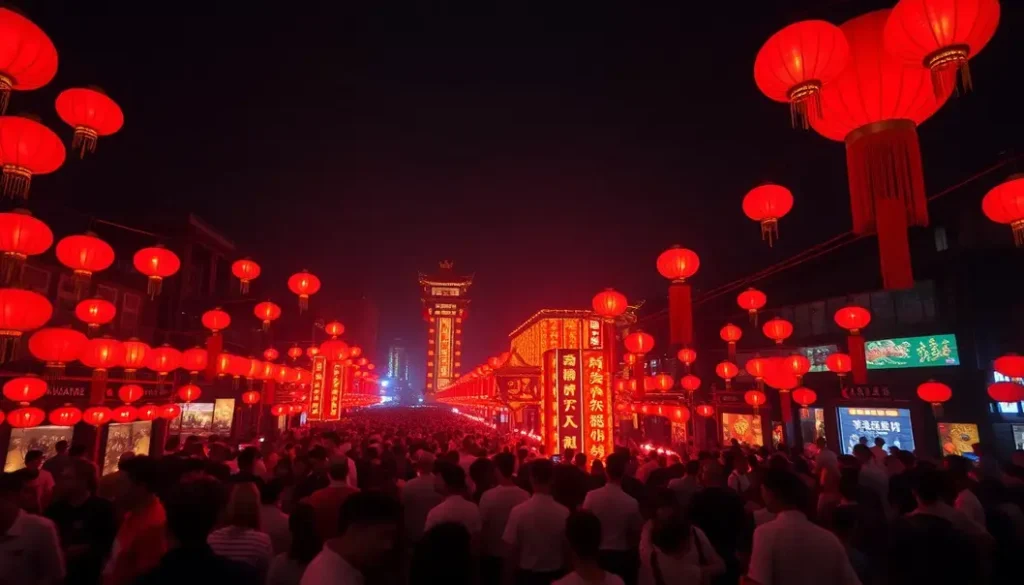Lunar New Year, a festival steeped in centuries-old traditions, carries a significance akin to a grand corporate bowl in sports culture. Celebrated by millions across the globe, particularly in East Asia, it’s a time of renewal, fresh starts, and unity. Just as sports bring people together, country after country rejoices in camaraderie as families connect, communities celebrate, and cities light up with fireworks. This festival, often associated with the Chinese zodiac, is marked by dynamic performances and delicious feasts. As we delve into its history, you’ll discover how this brilliant tapestry of cultural practices offers much more than a simple holiday — it’s a showcase of humanity’s enduring spirit and relentless pursuit of joy and connection.
The Origins and Evolution of Lunar New Year

The Lunar New Year, a celebration rooted in the delicate interweaving of history, culture, and mythology, stretches back over 3,000 years. Its origins can be traced to the Shang Dynasty, a period where the festival marked the beginning of agricultural cycles, anchoring itself in rituals intended to ensure a bountiful harvest. With the consolidation under the Han Dynasty, the celebration found greater prominence, evolving in connection with the philosophies of Buddhism and Taoism.
Legend tells of Nian, a monstrous beast that terrorized villages every New Year’s Eve. The introduction of firecrackers and the color red to the festival’s traditions hark back to this myth, both being effective deterrents against the fearful creature according to lore. The element of myth combined with religious and historic practices illustrates the festival as a dynamic tapestry of belief and tradition.
As centuries passed, each subsequent dynasty and cultural exchange enriched and transformed the Lunar New Year celebrations. Practices such as the veneration of ancestors and the honoring of deities during this festival echo Confucian values deeply entrenched within Chinese society. Meanwhile, the vibrant Dragon and Lion dances—a spectacle of energy and prowess—stem from an intention to ward off evil spirits, whilst symbolizing good fortune for the year ahead.
The giving of ‘lucky money’ in red envelopes, a practice as thrilling as a game-winning goal, emblematizes fortune, prosperity, and triumph. This gesture, integral to the celebration, highlights the importance of familial bonds and continuity. Over time, as the Lunar New Year crossed geographical and cultural boundaries, it absorbed various influences, thereby expanding its significance beyond simple festivity.
This celebration not only underscores the agricultural, spiritual, and social fibers of the communities involved but also represents a living, evolving tradition. The festival’s rich heritage continues to adapt, inviting new generations to partake in its unique blend of ancient and contemporary practices. It offers a sense of cohesion and identity through shared experiences, a celebration that reminds us of the cyclical nature of life and community ties.
The Cultural Significance and Festive Spirit

The cultural significance of the Lunar New Year is profound, extending far beyond the enchanting surface of red decorations and sumptuous feasts. The festival is a cornerstone of cultural identity, much like how major sports events ignite collective passion among fans. Just as spectators gather in stadiums to share in the highs and lows of their teams, communities come together during the Lunar New Year to celebrate shared history and values.
Symbols play a crucial role in bridging the past with the present, infusing each celebration with layers of meaning. Imagine the noise of firecrackers as the roars of a stadium crowd, audibly chasing away misfortunes and welcoming the new year with optimism. Lanterns, like trophies held aloft, shine brightly, marking achievements while lighting the way for future endeavors. Each symbol carries a legacy, turning a single night’s celebration into an affirmation of identity and hope for the days to come.
This spirit of unity and shared experience is where the Lunar New Year and global sports events find a common thread. The dedication individuals pour into preparing for the new year mirrors the rigorous training of athletes. There’s a deep-seated respect for tradition and community, much like the reverence fans hold for the longstanding customs of their favorite sports. Through traditions like family banquets, communal activities, and parades, participants reconnect with their roots, fostering a sense of belonging that is both reaffirmed and renewed each year.
In a world brimming with diverse cultures and celebrations, the Lunar New Year not only preserves ancient traditions but also adapts them, inviting new generations to participate and perpetuate its rich heritage. While the faces at the table may change, and the dances may incorporate modern twists, the festival’s core—its emphasis on family, harmony, and prosperity—remains steadfast and unyielding, much like the enduring spirit found in the heart of any major championship.
Final words
The Lunar New Year is more than a celebration; it’s a declaration of life and resilience that echoes the thrills found in sports. It invites us to reconnect with our origins, while fostering communal ties that pave the way for a harmonious future. Fans of sport, much like participants of this festival, understand the power of unity and joy. Celebrate this time as a reminder of our shared humanity, goalkeeping hope and luck for the upcoming year.
Join us in celebrating the spirit and joy of the Lunar New Year. Explore local festivals, embrace community, and make new memories today!
Learn more: https://www.example.com/celebrate-lunar-new-year
About us
Our company specializes in providing cultural and educational tours around the world, offering unique experiences during the most celebrated festivals, including the Lunar New Year. We provide insightful tours that immerse you in the traditions, history, and charm of cultural celebrations worldwide.

